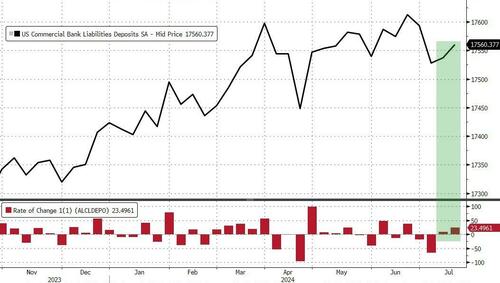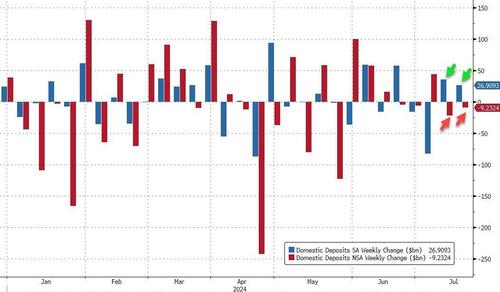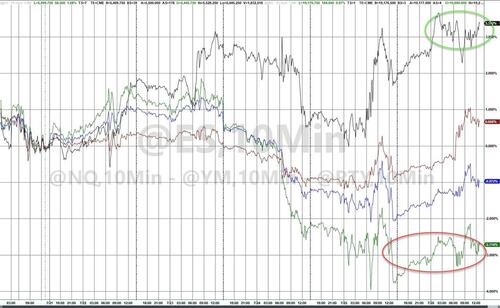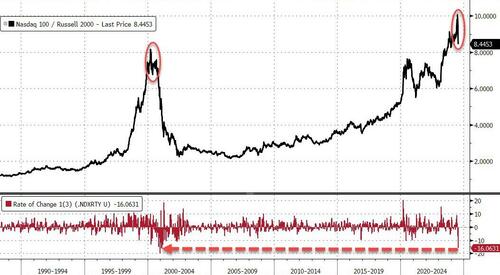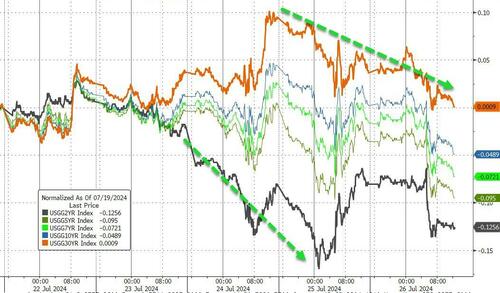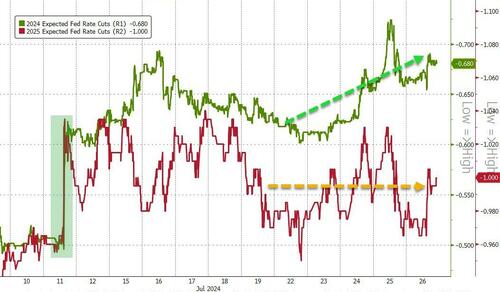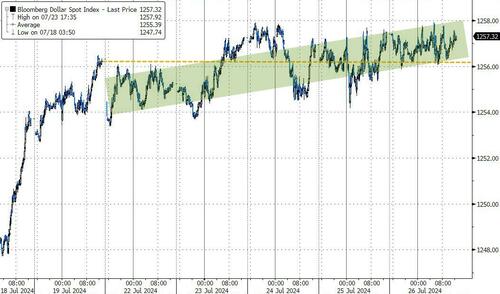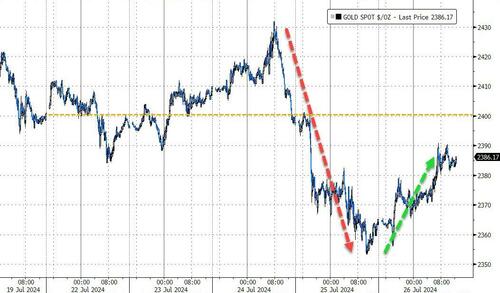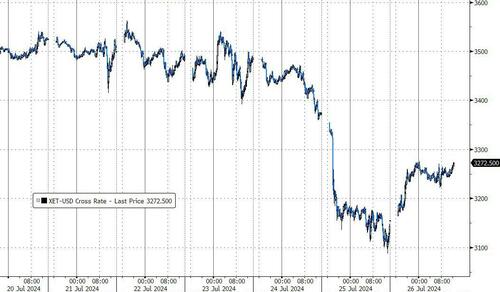On Kamala’s “Inspiring” Backstory & The Big Lie About “Unity”
Authored by James Hickman via SchiffSovereign.com,
The year was 1994.
Former NFL superstar OJ Simpson has just fled from police in the infamous low speed chase in his white Ford Bronco. Pulp Fiction was playing in the cinemas.
And 29 year old Kamala Harris began dating one of the most powerful politicians in the State of California— Willie Brown.
Brown had been in politics for decades at that point and has risen to become the Speaker of California State Assembly, then Mayor of San Francisco.
(And despite having spent his entire adult life in politics, Brown somehow managed to amass a collection of $6,000 suits and expensive sports cars.)
Willie Brown was also at 60 years of age back in 1994 (he’s 90 now), three decades older than his girlfriend Kamala.
Obviously she was in it for love. I’m sure that’s the case.
But it just so happened that, barely a few months into their steamy relationship, Speaker Willie Brown appointed Kamala to multiple, senior-level positions in the state, including a seat on the California Unemployment Insurance Appeals Board and the Medical Assistance Commission.
I’m also sure that Brown appointed his girlfriend due entirely to her competence, and absolutely no other reason whatsoever.
These appointments, along with Sugar Daddy’s public support and endorsement, were integral in Harris’s later campaign to become San Francisco District Attorney, then Attorney General of California in 2010.
Willie Brown also endorsed her for Senate when she declared her candidacy in 2016, and was instrumental in securing her top endorsements, including from Joe Biden and Barack Obama.
Again, all of this success was clearly due exclusively to Kamala’s tremendous competence and nothing more.
Now, a lot of people have been remarking lately that Kamala is a DEI (Diversity, Equity, and Inclusion) hire.
But that’s completely unfair.
Talk about a low blow. I mean, Kamala’s critics have completely missed the point that this woman— who claims to embody female empowerment— got her start by having sex with a powerful California politician 30 years her senior.
So let’s give credit where credit is due: she slept her way to the top well before she became a DEI hire.
In fact it wasn’t until she was picked to be Joe Biden’s running mate that she started benefiting from the DEI obsession.
Curiously, it is now considered racist to even bring this up. CNN has decided that calling Vice President Kamala Harris a “DEI Candidate” is a “pseudonym for the N-word” and “racist dog whistle”.
That’s absurd. Joe Biden’s entire presidency has been about promoting DEI candidates, and he admitted this himself recently when he said:
“To me the values of Diversity, Equality, Inclusion are literally— and that’s not kidding— the core strengths of America. That’s why I’m proud to have the most diverse administration in history that taps into the full talents of our country. It starts at the top with the Vice President.”
Biden also made it perfectly clear in 2020 that he wanted to select a woman of color as his running mate.
So why exactly is it controversial to assert that Kamala was a DEI hire? Is it also controversial that the sky is blue, or that Michael Jordan was an exceptional basketball player?
But these people in charge have a way of acting offended about even the most basic and obvious truths. It’s quite a talent.
Speaking of talent, Kamala has none.
Whenever she opens her mouth, she is as incompressible as Joe Biden yet without the excuse of age and dementia. Like this gem:
“So I think it’s very important… for us, at every moment in time, and certainly this one, to see the moment in time in which we exist and are present, and to be able to contextualize it, to understand where we exist in the history and in the moment as it relates not only to the past, but the future.”
This is also the person that was put in charge of the border security, which has been a total disaster. But in her televised explanation, she justified having not been to the border by saying she hadn’t been to Europe either.
Wow, really racking up those foreign policy credentials!
And on the topic of foreign policy, check out this inspiring quote as Kamala showcased her encyclopedic understanding of European affairs:
“Ukraine is a country in Europe. It exists next to another country called Russia. Russia is a bigger country. Russia is a powerful country. Russia decided to invade a smaller country called Ukraine, so, basically, that’s wrong.”
Note that this wasn’t an interview on Nickelodeon or some event with elementary school kids. This was an actual response in a real interview about the war in Ukraine.
One of my favorite Kamala stories, though, is when she visited Puerto Rico earlier this year.
Protesters were in the streets of San Juan, singing in Spanish. Kamala merrily clapped along, until an aide quietly whispered that the song was protesting her visit as a representation of the federal government’s “colonization” of Puerto Rico.
Her track record as a prosecutor is also far from impressive.
As the Attorney General of California, she prosecuted and incarcerated cannabis users. But in 2019, asked if she herself had ever smoked weed, she cackled and said, “I have. And I inhaled.”
In 2014, Kamala’s office argued to keep non-violent inmates (including from minor drug convictions) locked up so that the state would have free prison labor to fight wildfires.
But Kamala would prefer that her Black Lives Matters voters forget about all that.
The Big Lie they are now force-feeding us is that the party of democracy is energized and united around Kamala Harris.
Personally I think they are terrified and desperate. Deep down they know this woman is an incompetent buffoon. And more importantly, they are still incredibly fractured.
Just look what the radical left has been doing this very week.
Their Marxist foot soldiers have been busy burning American flags, defacing public monuments, and hoisting Hamas flags, while chanting “Allahu Akbar!” in the streets. Curiously most of them are white atheist 20-somethings from upper-middle class upbringings.
And some of the Left’s most prominent politicians boycotted a speech given by the Prime Minister of Israel— one of America’s strongest allies during its time of war.
This continues to look like a group that is completely out of touch, but insists that they have everything under control… which is pretty much par for the course given the last few years under Biden.
Having said all that, it would be foolish to think they won’t pull out all the stops— continue to create all the propaganda, tell whatever lie, manufacture whatever hoax, and suppress whatever truth is necessary to win.
Tyler Durden
Fri, 07/26/2024 – 19:50
via ZeroHedge News https://ift.tt/p7Lnk3v Tyler Durden







